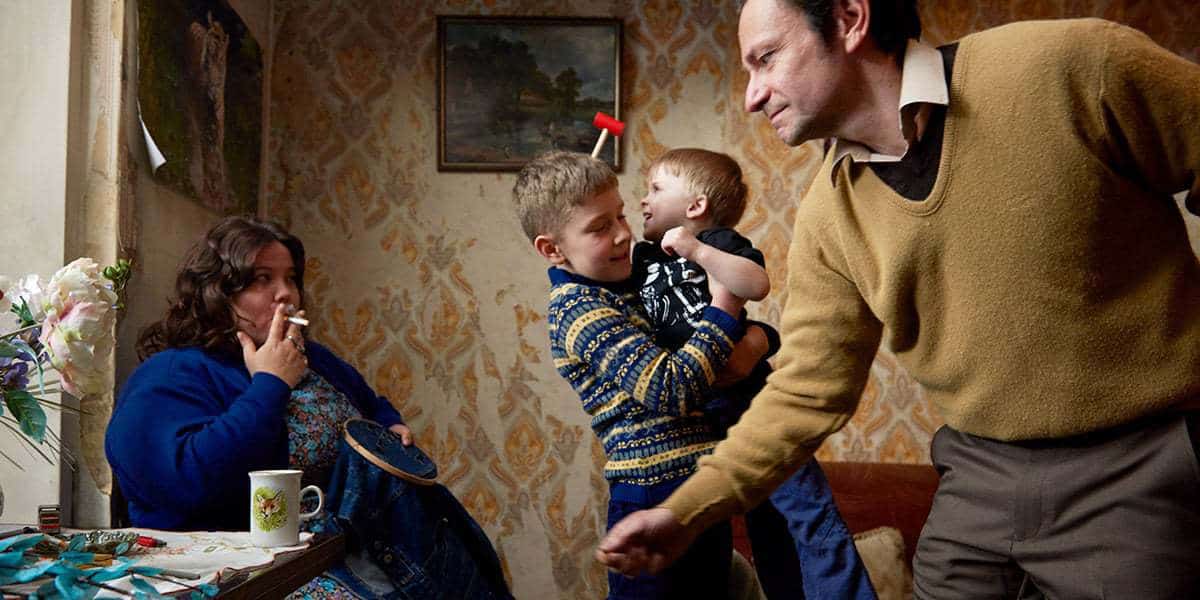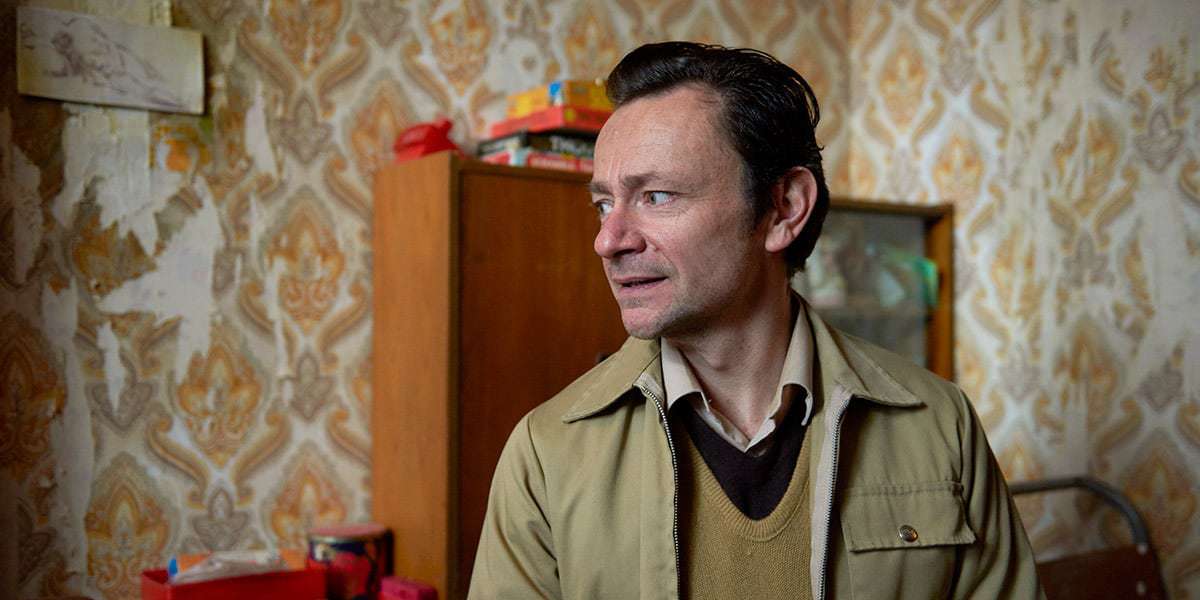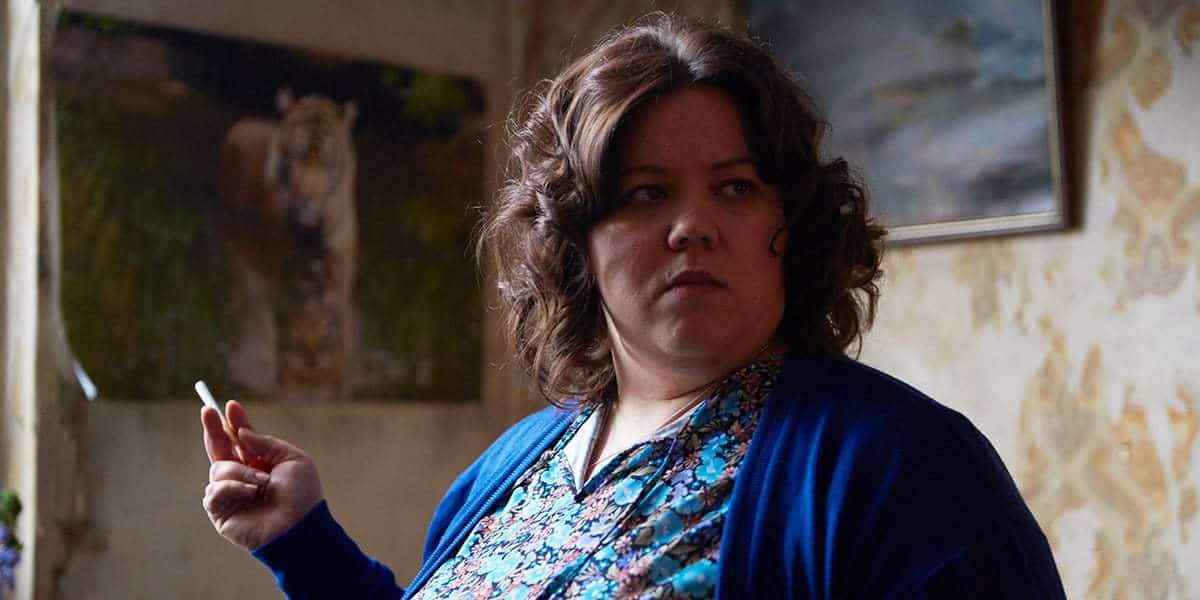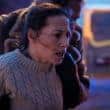Richard Billingham discusses his debut feature Ray & Liz, which viscerally recreates some of his own memories growing up in 1970s’ Birmingham.

The debut feature from celebrated British photographer Richard Billingham is one of our favourite discoveries of the year. Based on Billingham’s own childhood memories, the dreamlike film isn’t so much a walk down memory lane as a series of brief but momentous visits into the past. Billingham reinvents the genre of the kitchen sink drama, its social realist angle filtered through the processes of experiencing and remembering.
Ray, an old man living alone in a small and grey one-room flat atop a tall building, drifts into memories of his younger days. The contrast between these temporalities is brutal, making Ray’s remembrances all the more vivid and precious. Back then, life was busy and colourful, animated by the eccentric character of his wife Liz, and the naughty jokes of his two children (Billingham is one of them). But Ray & Liz, as visually striking and melancholy as it is, isn’t straightforwardly nostalgic: most of the moments we revisit from Ray’s past show parental negligence, violence, alcoholism, and loneliness.
At TIFF18, Billingham talked to us about how the set design informed his writing; working with the actors; giving a sculptural quality to his images; and more.
Seventh Row (7R): Why did you want to tell this story?
RB: I didn’t sit down and think to myself, “I want to write a feature film.” A few years ago, I made the short film called Ray, and it was about my father in a room, so it’s one man in a room. The idea was that it would be a gallery film, that the viewer could walk in and walk out. It wasn’t a linear narrative. The film charted two or three days of Ray’s existence, sort of drinking, sleeping, looking out the window.
7R: Was it actually your father?
RB: No, it was an actor. And I wanted to see what that would look like. I didn’t write it in a linear way, with a beginning, middle, and end. It was a circular or elliptical structure. While I was making that or about to make it, I also wrote another short film about Lol and Will, characters that we see in Ray & Liz, another stand-alone. And when I had these two films, I thought if I could write another one, I could make a feature.

7R: The film moves around in time, but there are these through-lines guiding us: the odd habits of these characters. For example, the way Ray always fills up his glass to the rim. When the film goes into a memory, we see another actor do it, and we know it’s Ray.
RB: When you make a film, if you can show something and not have dialogue, it’s better. It’s a small emotion, maybe, so that the more I can show without explaining, the better.
7R: How do you approach the dialogue?
RB: I didn’t go to film school. I didn’t really know how to write a script, so I wrote down what things look like — where things are in a room, what the objects are: so a person walks in, this happens and that happens. I didn’t write any dialogue, I just wrote in what things look like. And then, I put the dialogue last. You do what you can visually, and where things need a bit of articulation, then put some dialogue in.
[click_to_tweet tweet=”‘I didn’t go to film school, I didn’t really know how to write a script so I just wrote down what things look like… And then I put the dialogue last.'” quote=”‘I didn’t go to film school, I didn’t really know how to write a script so I just wrote down what things look like… And then I put the dialogue last.'”]
7R: The dialogue is quite naturalistic and realistic. I thought the cast were first-time actors at first because they feel so genuine.
RB: The older Ray, that actor, he was from theatre. He’d never done any screen work. So I had to tell him to stop doing things with his face. He might do something with an eyebrow, something with the mouth, something with the eye, all at the same time, and it looks confusing on screen. You can’t read him as a character. So I said, “Just do one thing at a time with your face.” And then he said, “I’ve spent years going to RADA to be told this?”
7R: How did you work with the child actors? They were really good, as well.
RB: I found that the less I said to them, the better — if I just gave them very clear instructions, like, “put the powder on the spoon and walk in.” If you say, “walk in and don’t drop any powder,” they’ll naturally walk carefully, but if you say “walk carefully,” they’ll do it in a way which brings attention to it. So you’ve just got to be clever. Use your common sense. Tell them to do something, but don’t tell them how to do it.

7R: I looked at a few of your pictures [of Billingham’s parents’ home, on which the film is based]. The set design, especially the rooms with Liz, seemed exaggerated for the memory effect, but when I looked at your photos, that’s really what the rooms looked like. How did you work with the set designer to recreate the spaces?
RB: If you tell a set designer to do it, they’ll do it how they think, and it doesn’t look real. Things are there for a reason. They’ve evolved to be like that. I was sensitive to that. For example, in the room when Lol comes in, Liz has her zone: she always sits on that chair, she’s by the window so she can see who’s coming, she’s got the table in front of her, she’s got the telly in her eyesight too. She’s in control, and if she sits there, it’s like she’s got the best space in the bar. So then Ray would sit on the sofa, next to her but lower down, and then Will, he’s got his zone up here. He thinks they’re smelly and unclean so he’s got his clean zone where he sits when he lights the cigarette. Will would never sit on Liz’s seat, because he’d probably think that she smells or she’s fat or something. It’s just being sensitive to that.
[click_to_tweet tweet=”‘For the set design, things are there for a reason. They’ve evolved to be like that. I was sensitive to that.'” quote=”‘For the set design, things are there for a reason. They’ve evolved to be like that. I was sensitive to that.'”]
7R: Even though you’re a professional photographer, the film doesn’t have the picturesque establishing shots we might expect; we don’t get any of those carefully constructed frames that clearly show us the architecture of the rooms.
RB: If you open a magazine, say National Geographic, and there’s a photo essay on a family living in Russia or in a remote village, the first image will be of the room. They’ll show the whole room — but I feel that once you’ve shown that, you’ve blown it. You can show photographs of things within the room, but you’ve already shown the whole thing. Whereas if you show bits, the viewer can put all those bits together.
The camera work was a function of the set design. I thought that if I could get all the objects in the rooms perfect, how they really were, with all the spatial relationships between them worked out, then we could formulate the camera shots around that. It’s not like we’re going to move the bed to get a nice shot. The camera shots are a sort of function of the space, the room.
[click_to_tweet tweet=”‘I feel that once you’ve shown a shot of the whole room, you’ve blown it. Whereas if you show bits, the viewer can put all those bits together.'” quote=”‘I feel that once you’ve shown a shot of the whole room, you’ve blown it. Whereas if you show bits, the viewer can put all those bits together.'”]
7R: Do you think the way you always let the space dictate the shots comes from your training as a photographer?
RB: I don’t know… If I make another film, I’ll do it completely differently. I’ll cheat! So it might have come from photography, but the methodology also felt right for that project.
7R: Why did you choose to shot on 16mm? For realism?
RB: Partly, but partly to feel like you’re going back in time. If you use video, and you’re going back in time, it’s hard to make it look real. It’s a bit, you know — we didn’t have video then. I almost thought about shooting it in black and white to begin with. But I thought fewer people would watch it if it was in black and white.
[click_to_tweet tweet=”‘I thought that if I could get all the objects in the rooms perfect, how they really were, with all the spatial relationships between them worked out, then we could formulate the camera shots around that.'” quote=”‘I thought that if I could get all the objects in the rooms perfect, how they really were, with all the spatial relationships between them worked out, then we could formulate the camera shots around that.'”]
7R: Even though there are so many colour in the films, there are these levels of shade that highlight the physicality of the objects. The images aren’t just aesthetically pleasing combinations of shapes and colours, there’s a deeper dimension to them because they also reflect a physical space.
RB: Yeah, there’s a sculptural quality. It had to look three dimensional. I said to Daniel [Landin], the DOP [Director of Photography], that I wanted to bring things out. I wanted things to appear 3-D. But the lighting can’t look obvious or false, it’s still got to look natural. He and the lighting technicians, they just know how to do it. The lighting took ages. It’s what took the longest.

7R: Did you shoot in studio?
RB: No, we shot on location, where the events took place. We didn’t get the same flat, but we got a flat in the same tower block on the same floor. So even with locations, we try to be authentic. Maybe it was a conceptual decision, to have the same locations.
7R: Was it really important for you that the film recreates exactly what happened, or how you remember things? Did you ever stray from your memories?
RB: I tried not to. I thought if I was to stray, then I might fall into a cliche or generalizations. I knew that if I kept to memory, then there was a chance the film could be more particular and look different.
[click_to_tweet tweet=”‘I thought if I was to stray from my memories, then I might fall into a cliche or generalizations. I knew that if I kept to memory, then there was a chance the film could be more particular.'” quote=”‘I thought if I was to stray, then I might fall into a cliche or generalizations. I knew that if I kept to memory, then there was a chance the film could be more particular.'”]
7R: The actors are playing real people. How did you help them do that?
RB: I gave them lots of character backstory, talked to them for days. We did lots of rehearsals because these are layered performances… I made a documentary called Fish Tank in 1998 that was about my family, so they could look at that and make decisions about the way someone walks, etc…
In the film, I’m there as a child and I’ve got audio tapes, I’m taping things. I still have about 20 audio tapes that I made when I was a kid, and I could play these to the actors, as well. The actor that played Lol, once he heard the way Lol always repeats himself, he didn’t feel strange about doing that anymore, because he knew it existed. He knew someone could actually be like that! Hearing someone else do it gave him the confidence to do it himself.
7R: Would you call this movie a fiction film, or do you not care about those labels? Would you ever make a totally fictional film?
RB: Yes, I would, and I plan to. But documentary is such a loose term now. You could put this into a documentary festival, and they wouldn’t question it.
[click_to_tweet tweet=”‘Documentary is such a loose term now. You could put this into a documentary festival, and they wouldn’t question it.'” quote=”‘Documentary is such a loose term now. You could put this into a documentary festival, and they wouldn’t question it.'”]
7R: The scenes themselves, the flashbacks, are really visceral. You really feel as if you’re in the room, but they’re also structured as memories, things that someone is remembering. The way the film deals with memory is really interesting.
RB: I wanted it to feel like it was from lived experience, as if somebody had seen it or experienced it, so it’s filtered through the body of a person. I wanted it to feel real, like you’re real in front of me right now. Like a presence. An awareness of reality.
When I was a kid, I remember thinking or feeling that when I’m in the room with my parents, and the TV’s on, and I’m listening to them talking in the background, “Do you want a cup of tea? …” Just regular chat… It felt like time was passing outside, but time wasn’t passing inside. It felt like time stood still, somehow.
[click_to_tweet tweet=”‘I wanted it to feel like it was from lived experience, as if somebody had seen it or experienced it, so it’s filtered through the body of a person.'” quote=”‘I wanted it to feel like it was from lived experience, as if somebody had seen it or experienced it, so it’s filtered through the body of a person.'”]
When you think about your memories as a kid, things do appear in close up because you look at things really close up, like this wire or plug socket. Or you feel the texture of things. You put your face really close to the carpet; you want to feel what carpet’s like. Maybe that’s influenced the look of the film.
7R: You say maybe because it’s instinctual?
RB: Yeah. I didn’t reason it out. I did what felt right, and reason comes later, when you’re interviewing me!
[click_to_tweet tweet=”‘When I was a kid, I remember feeling like time was passing outside, but time wasn’t passing inside. It felt like time stood still, somehow.'” quote=”‘When I was a kid, I remember feeling like time was passing outside, but time wasn’t passing inside. It felt like time stood still, somehow.'”]
7R: Are you planning on making another feature film?
RB: I’d love to make more, but very different. I’d like to shoot panoramic for a start, and outdoors.
Davies’ The Deep Blue Sea is also a film about remembering. As flashbacks show us scenes from Hester’s past, her version of events progressively comes undone. We are left to reflect on the impact that emotions can have on our perceptions and the narratives we construct of our lives.
In Ray & Liz, Ray appears almost entirely unemotional when remembering these moments from his past — the way most people do when no one is watching them, and when these memories are very old news. Similarly, in The Tale, Jennifer Fox’s proxy remains calm and in control even as she excavates buried and troubling truths from her childhood. In both cases, the characters seem to acknowledge — more or less begrudgingly — the fact that there is nothing that can be done about these sad events now.

